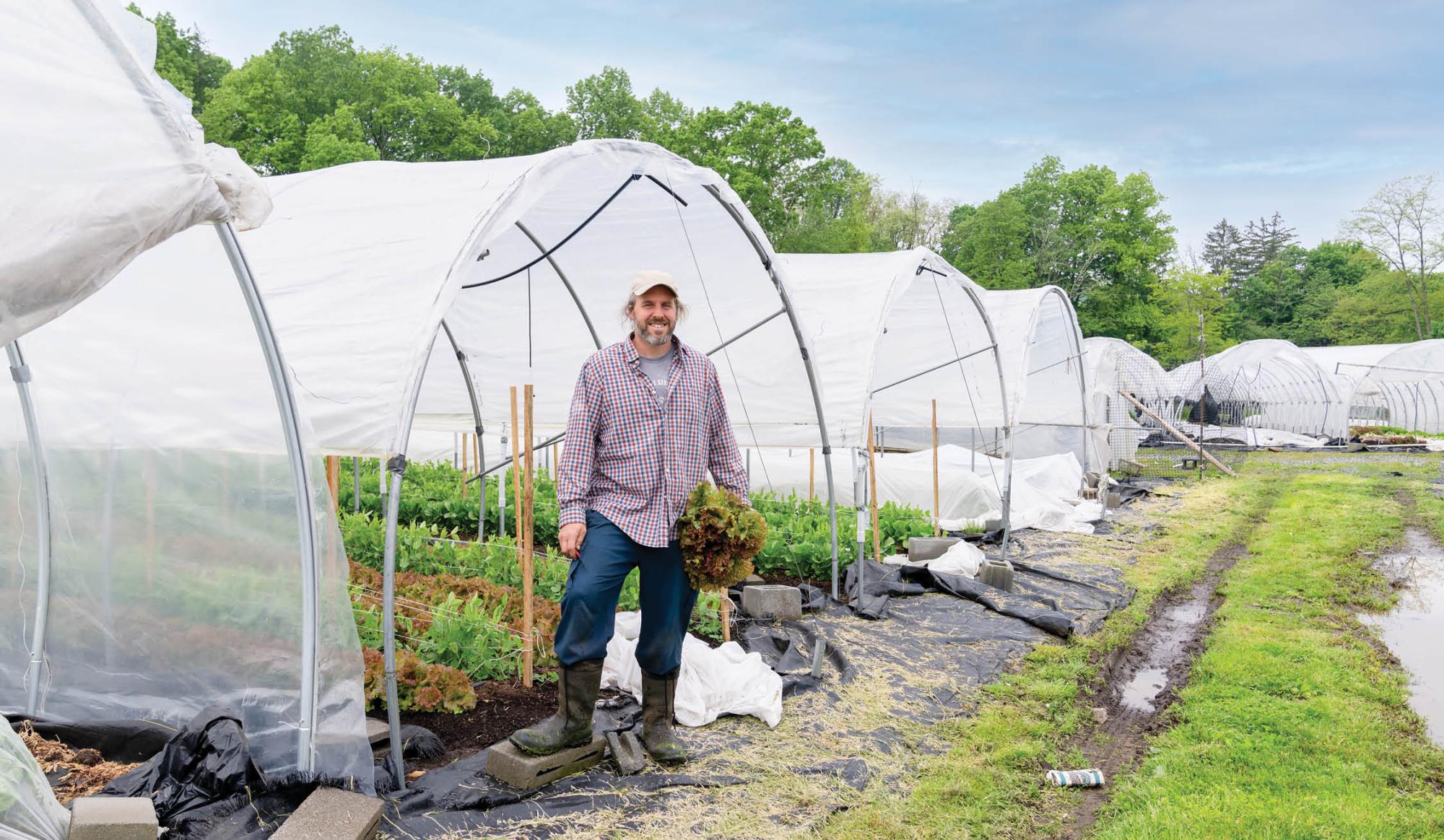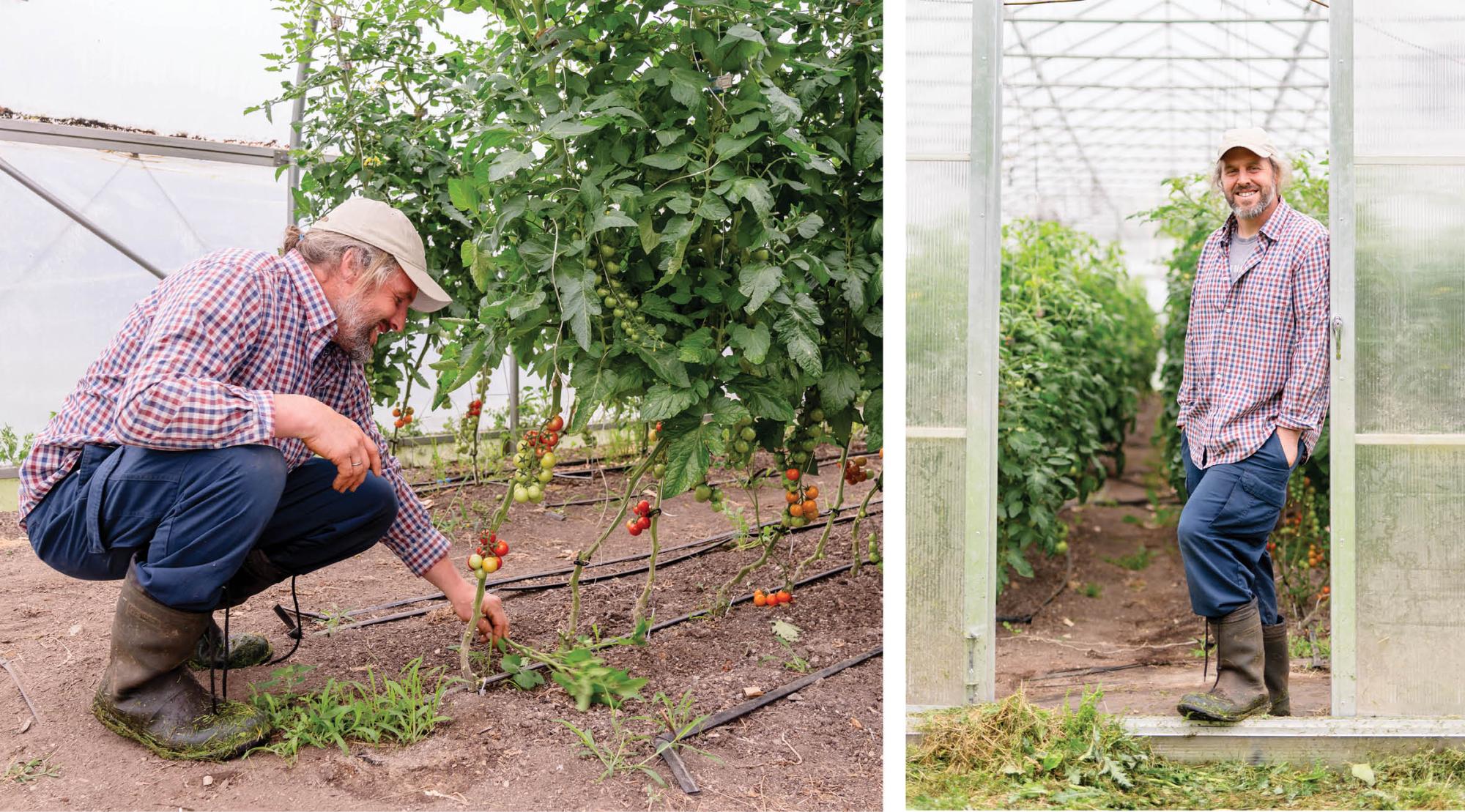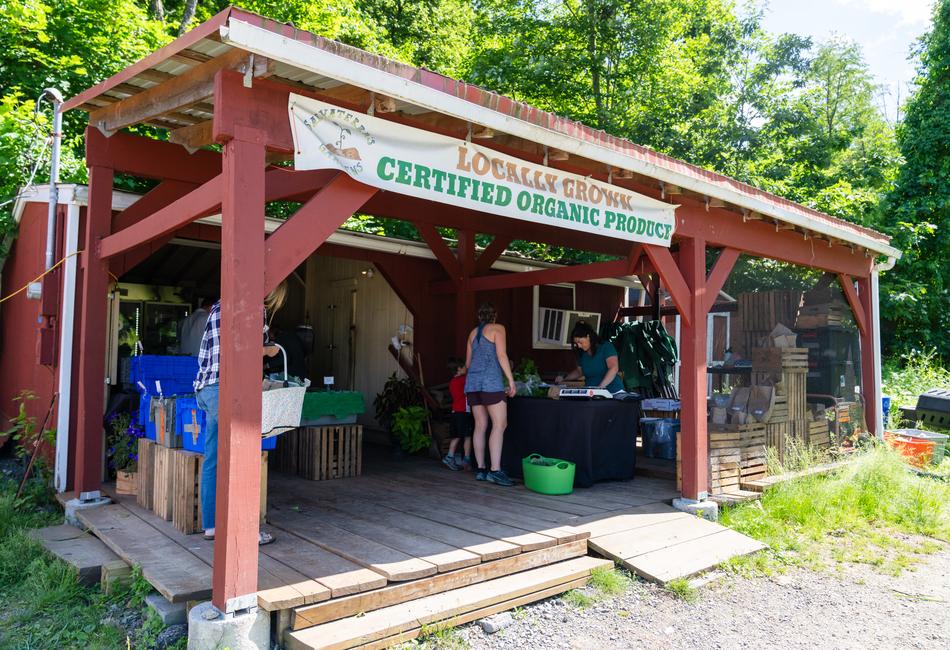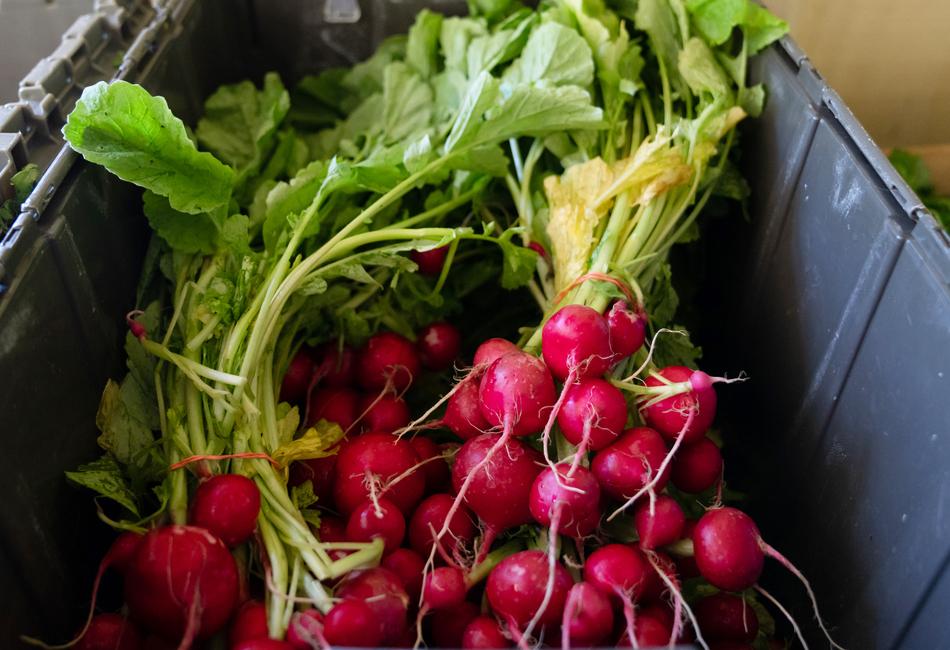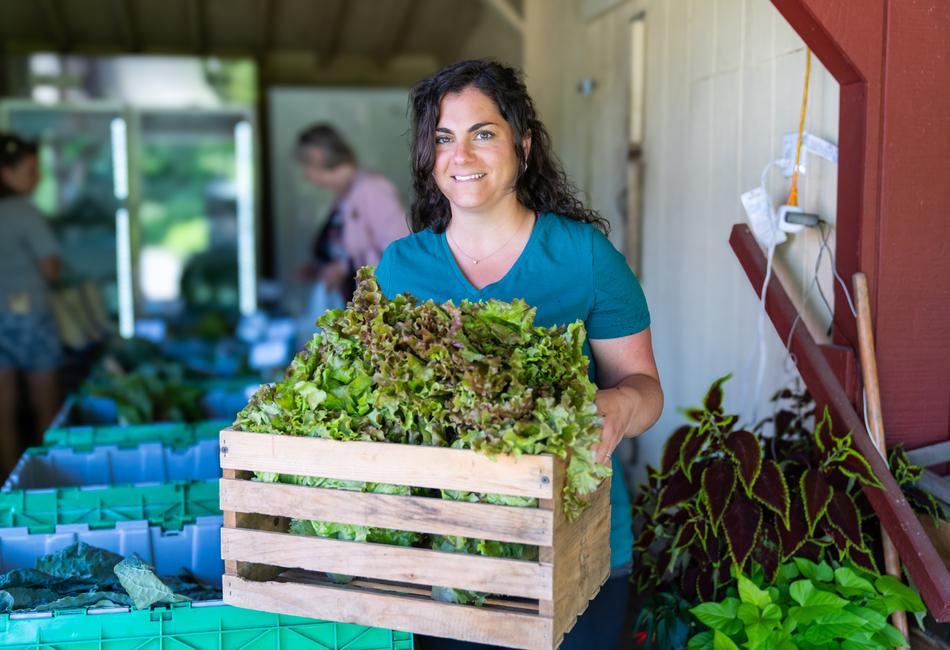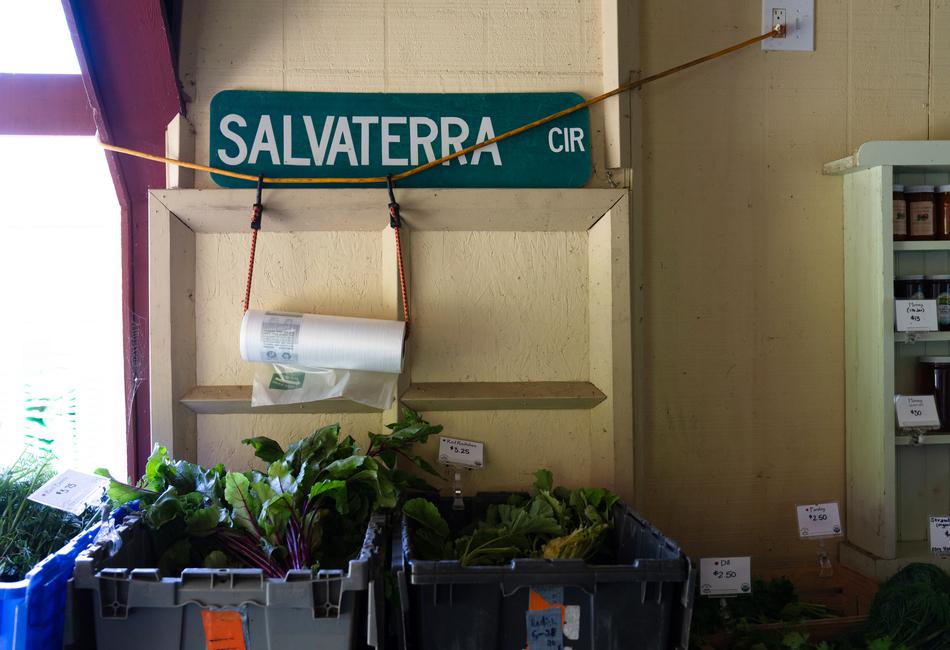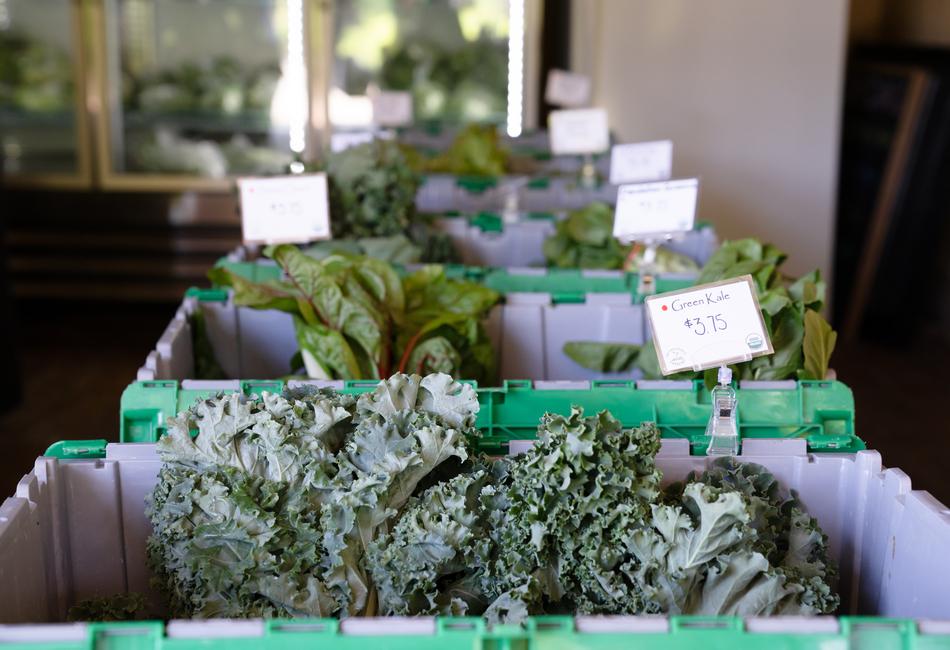Most everything on the property is grown in tunnels—long rows with a half-moon structure over top covered in plastic—using a no-till farming method because he has found that it leads to less weeds. And with their setup, they have to pick weeds by hand and paying staff only to weed, he says, wouldn’t be profitable for them.
The tunnels are covered, but not closed on the sides in the summer. They’re covered to keep water off the leaves of the plants and regulate exactly how much water they get using his irrigation system using groundwater. A particularly heavy thunderstorm, hail or wet summer can wreak havoc on their crops without the cover.
Salvaterra says they first started without tunnels, because the yield was too unpredictable and not up to the quality he prefers when selling.
In the first small tunnel, one 100 on the property, he had dill growing on May 1, with space for eggplant to be planted. He also had three medium-sized tunnels, and in the only heated tunnel on the property, just behind his house, Salvaterra had tomatoes growing; he expected them to be ready to be picked the second week of the month.
Despite having a heated tunnel, he says he’s still careful about what he grows in there. For instance, he doesn’t grow tomatoes year-round; he’d need supplemental lighting for that, which wouldn’t be cost-effective. Instead, he uses the heated tunnel to extend his growing season for tomatoes.
“People generally are going to bring cherry tomatoes [to markets] in July,” Salvaterra says. “You're going to get a lot of months where there's not a lot of them, so you're not competing with anyone, but you're not going to pay to do that in the winter.”
In the winter, he limits what he grows to produce that doesn’t need as much light and can freeze and thaw, such as kale, spinach and swiss chard.
‘I WOULDN’T CALL IT FARMING’
Salvaterra got the idea for his process from a book he read when he first started gardening about farms on the outskirts of Paris in the early 1900s. Those farmers used methods to grow crops effectively on small plots of land, much like what Salvaterra is doing, to provide those in the city with vegetables year-round. They used cloches—Salvaterra describes them as glass carboys with the bottoms cut off—to protect the plants and extend the growing season. At night, the plants would be completely covered, and during the day, the cloches would get tipped up to let air underneath.
They also timed everything out so that while one type of produce was being harvested, others were already growing. Salvaterra noted how labor-intensive it was, which is why he made modifications for his own use.
“Everything out here is more gardening, but it's like a standardized form of gardening,” Salvaterra says. “I wouldn't call it farming. It's farming, but it's not like a farm when you’re driving by cornfields. If you see romaine growing in California, it's not like that. It's more like a standardized form. And the beds are constantly rotating. They always have something growing in them. To make enough money, you have to have a plan that you’ve worked on for years where the timing’s all right.”


